Proteomics
Name
Published by
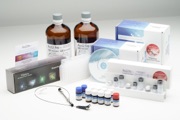
This advanced method offers an end-to-end solution developed around an advanced application, a specialized kit, or an analytical system. It delivers complete functional, ready-to-use protocols that are qualitatively and quantitatively assessed for consistency, executability, and repeatability, usually without needing to make any changes. It operates per batch size and is scalable to accommodate changing requirements.
The task of accurately separating, identifying, and quantitating amino acids in the research, development, and commercialization of food, feed, and biotherapeutic products is challenging.
To analyze released amino acids by HPLC or UPLC, Waters provides many solutions that use pre-column derivatization so that amino acids can be analyzed by optical detection.

This example method provides a freely adjustable framework for measuring the adaptability of the OneLab environment to workflows from different application fields. It helps to understand various nuances of the code-free, universal protocol designer and provides general indications as to the feasibility of a project. Scripts generally require fine adjustment to correct for variables and support specific labware implementation.
Investigating the ACE inhibitory activity of active biomolecules is a valuable source of drugs for the treatment of cardiovascular diseases.
OneLab helps mitigate the effects of pipetting errors and variability during the assessment of ACE inhibition and IC50 determination. This allows for the delivery of more reliable and accurate data, while eventually accelerating biological discovery.
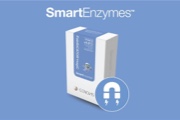
This advanced method offers an end-to-end solution developed around an advanced application, a specialized kit, or an analytical system. It delivers complete functional, ready-to-use protocols that are qualitatively and quantitatively assessed for consistency, executability, and repeatability, usually without needing to make any changes. It operates per batch size and is scalable to accommodate changing requirements.
Developing a robust process for manufacturing therapeutic mAbs poses many analytical challenges. This requires high-throughput methods with fast sample preparation, robust analytics, and easy data interpretation.
Here we present a fully automated workflow for sample preparation for middle-level analysis by LC-MS of mAbs directly from crude protein samples such as harvested cell culture fluid.
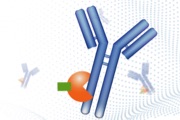
This basic method provides the core methodology for translating a workflow into OneLab-executable script(s) as an attempt to fully or semi-automate a specific procedure. It demonstrates the benefits of automation and highlights OneLab capabilities and best practices to promote solution adoption, helping transition from manual to a more automated approach. It can be used alone or serves as a building block for a more complex workflow and is easily adaptable to users' requirements.
Antibody purification is routinely performed in biopharmaceutical research. Here, we present a rapid automated Protein A-based antibody purification method using magnetic beads. The robust protocol ensures high antibody recovery.
The automation capabilities of the Andrew+ Pipetting Robot allow for the flexibility of processing samples up to 48 samples depending on throughput needs.
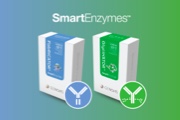
This advanced method offers an end-to-end solution developed around an advanced application, a specialized kit, or an analytical system. It delivers complete functional, ready-to-use protocols that are qualitatively and quantitatively assessed for consistency, executability, and repeatability, usually without needing to make any changes. It operates per batch size and is scalable to accommodate changing requirements.
Subunit analysis of therapeutic antibodies by LC-MS using FabRICATOR (IdeS) digestion provides a rapid approach for analyzing many important quality attributes including Fc glycosylation and oxidation.
Here, we describe protocols for automated sample preparation using the Andrew+ Pipetting Robot.
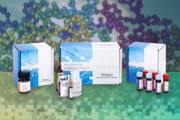
This basic method provides the core methodology for translating a workflow into OneLab-executable script(s) as an attempt to fully or semi-automate a specific procedure. It demonstrates the benefits of automation and highlights OneLab capabilities and best practices to promote solution adoption, helping transition from manual to a more automated approach. It can be used alone or serves as a building block for a more complex workflow and is easily adaptable to users' requirements.
Bottom-up proteomics is a useful approach for the discovery of signature peptides to identify specific proteins found in the complex food matrix.
Here we present a fully automated sample preparation protocol for protein digestion using the ProteinWorks kit, and the final mixture obtained will be ready for a typical LCMS method.
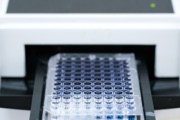
This example method provides a freely adjustable framework for measuring the adaptability of the OneLab environment to workflows from different application fields. It helps to understand various nuances of the code-free, universal protocol designer and provides general indications as to the feasibility of a project. Scripts generally require fine adjustment to correct for variables and support specific labware implementation.
The Bicinchoninic Acid (BCA) Protein Assay is a highly sensitive colorimetric method designed to measure the concentration of a protein of interest compared to a protein standard.
OneLab guides you through the workflow and assists in setting up serial dilutions of the standard protein so as to ensure accurate estimation of your protein concentration and full traceability.
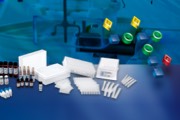
This advanced method offers an end-to-end solution developed around an advanced application, a specialized kit, or an analytical system. It delivers complete functional, ready-to-use protocols that are qualitatively and quantitatively assessed for consistency, executability, and repeatability, usually without needing to make any changes. It operates per batch size and is scalable to accommodate changing requirements.
Monitoring N-Glycosylation is increasingly applied in the development of biopharmaceuticals and the study of diseased cells. Glycan preparation is laborious, and analytical methods lack sensitivity.
GlycoWorks RapiFluor-MS accelerates N-glycan preparation while improving detection sensitivity. Repeatability and traceability are assured when paired with Waters Lab automation solutions.
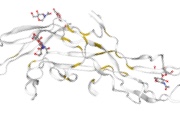
This basic method provides the core methodology for translating a workflow into OneLab-executable script(s) as an attempt to fully or semi-automate a specific procedure. It demonstrates the benefits of automation and highlights OneLab capabilities and best practices to promote solution adoption, helping transition from manual to a more automated approach. It can be used alone or serves as a building block for a more complex workflow and is easily adaptable to users' requirements.
N-glycans affect the safety and efficacy of many therapeutic proteins and are routinely monitored for the quality of biotherapeutics.
Here, we present a complementary method for analyzing the complex N-glycans released from human chorionic gonadotrophin (hCG). The automated method provides a reproducible glycan profile and is suitable for commercial as well as research environments.
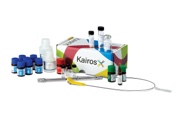
This basic method provides the core methodology for translating a workflow into OneLab-executable script(s) as an attempt to fully or semi-automate a specific procedure. It demonstrates the benefits of automation and highlights OneLab capabilities and best practices to promote solution adoption, helping transition from manual to a more automated approach. It can be used alone or serves as a building block for a more complex workflow and is easily adaptable to users' requirements.
To analyze amino acids in biological samples by LC-MS, Waters provides a fast reproducible solution that uses pre-column derivatization built on the AccQ•Tag reaction chemistry, with the ability to quantitate over 40 amino acids in less than 10 minutes.
Waters Kairos Amino Acid Kit – High Throughput (500+) enables precise and accurate preparation of over 40 amino acids using the Andrew+ Pipetting Robot.

This example method provides a freely adjustable framework for measuring the adaptability of the OneLab environment to workflows from different application fields. It helps to understand various nuances of the code-free, universal protocol designer and provides general indications as to the feasibility of a project. Scripts generally require fine adjustment to correct for variables and support specific labware implementation.
Simple, one-step affinity purification of recombinant proteins using magnetic beads is an attractive option to explore optimal expression and analytical conditions, thereby accelerating the translation of research findings into practice.
The aim of OneLab is to streamline protein purification by integrating connected devices for magnetic separation as well as to ensure consistent pipetting.
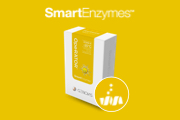
This advanced method offers an end-to-end solution developed around an advanced application, a specialized kit, or an analytical system. It delivers complete functional, ready-to-use protocols that are qualitatively and quantitatively assessed for consistency, executability, and repeatability, usually without needing to make any changes. It operates per batch size and is scalable to accommodate changing requirements.
Developing a robust process for manufacturing biopharmaceuticals poses many challenges. It requires high-throughput methods with fast sample prep, reproducible analytics, and easy data interpretation.
Here we present an automated sample prep workflow to compare the O-glycopeptide profiles of heavily O-glycosylated protein therapeutics using the O-protease OpeRATOR for subsequent LC-MS analysis.
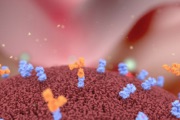
This example method provides a freely adjustable framework for measuring the adaptability of the OneLab environment to workflows from different application fields. It helps to understand various nuances of the code-free, universal protocol designer and provides general indications as to the feasibility of a project. Scripts generally require fine adjustment to correct for variables and support specific labware implementation.
The expression level of specific receptors serves as a biomarker for pathological conditions. The quantitation of their number on target cells is very informative from a diagnostic and therapeutic perspective.
Consistent and repeatable sample preparation and staining of calibration beads and cells are ensured through accurate pipetting using OneLab, thereby minimizing variation in ABC assignments.
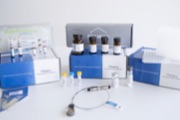
This advanced method offers an end-to-end solution developed around an advanced application, a specialized kit, or an analytical system. It delivers complete functional, ready-to-use protocols that are qualitatively and quantitatively assessed for consistency, executability, and repeatability, usually without needing to make any changes. It operates per batch size and is scalable to accommodate changing requirements.
Peptide analysis can be a demanding process especially with the increased need for a greater understanding of SARS-CoV-2 infection.
Waters SARS-CoV-2 LC-MS kit enables precise and reproducible preparation of three SARS-CoV-2 peptides from the NCAP protein using the Andrew+ pipetting robot.

This example method provides a freely adjustable framework for measuring the adaptability of the OneLab environment to workflows from different application fields. It helps to understand various nuances of the code-free, universal protocol designer and provides general indications as to the feasibility of a project. Scripts generally require fine adjustment to correct for variables and support specific labware implementation.
This protocol streamlines filling Bio-Techne’s Simple Western™ pre-filled plate with the Chemiluminescence assay. OneLab’s automation with Andrew+ ensures precise setup, aligning with the same time efficiency and reproducibility found with Jess™ platform, powered by Simple Western™ technology.
Jess system and other Simple Western platforms offer a solution to quicker and better results than traditional Western blot and ELISA.
